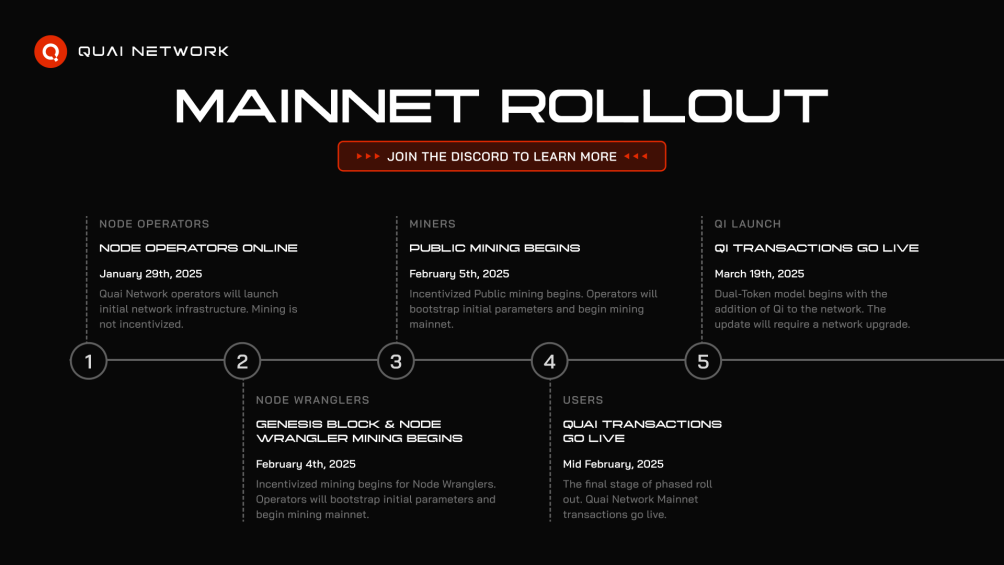
Today, January 29th, 2025, we’re launching Orchard – a permanent testnet that will run alongside mainnet. This environment allows for continuous testing and development without risking real assets.
It marks the first stage of the Quai mainnet rollout:
- January 29, 2025: Orchard public testing environment launch
- February 4, 2025: TGE & Node Wrangler mining
- February 5, 2025: Public mining opens for everyone
- Mid February: Mainnet QUAI transactions live
- March 19, 2025: Mainnet QI mining and transactions live
Getting started
Orchard testnet is now live, allowing everyone to test mining setups, update their nodes, and start testing their smart contracts before the incentivized public mining begins on mainnet launch on February 5th. To use the Orchard testnet, make sure to upgrade to the following:
- go-quai v0.42.0
- Genesis nonce: “62242624366553750196964614682162313”
- Network: “orchard”
- go-quai-stratum v0.20.0
- quai-gpu-miner v0.5.0
- Pelagus Wallet v1.0.31
We’ve prepared all essential resources to support this testnet including, Note: these ancillary services may not be available immediately, but should be online by 23:00 UTC 01/29/2025:
Important Note on Network Parameters
For testing purposes, Orchard uses modified parameters compared to mainnet. For example, the coinbase unlock period is set to 1 day (versus 2 weeks on mainnet) to facilitate faster testing cycles. These adjustments help developers and miners test functionality more efficiently while maintaining the network’s core mechanics.
For a more detailed technical overivew, please see Orchard Public Testnet: Technical Details and Implementation
What This Means For…
Developers
Orchard provides a comprehensive environment for testing smart contracts before mainnet deployment. You can validate application behavior, experiment with network interactions, and debug implementations without cost. The testnet faucet ensures you have the tokens needed for development and testing.
Miners
Public mining opens on February 5th, allowing everyone to participate in securing the network.
If you’re preparing for mainnet mining, Orchard is your testing ground. Configure and validate your mining setup, test different strategies, and understand network parameters before public mainnet launches.This ensures you’re fully prepared when incentivized mining begins.
Node Wranglers
Incentivized mining for Node Wranglers begins on February 4th. You can begin providing statistics for Orchard immediately. Use this opportunity to test your node configurations and prepare for the transition to mainnet on February 4th. Your role in maintaining network stability remains crucial during this testing phase.
Users
Starting today, you can use Orchard to request testnet tokens from the faucet, send test transactions, interact with Pelagus Wallet, and try smart contract interactions that developers are going to test on the network.
You will be able to transact with mainnet QUAI starting mid February and mainnet QI starting March 19th.
The Road Ahead
Orchard will continue operating after mainnet launch, providing a permanent testing environment for future network upgrades and development. This ensures we maintain a stable, risk-free environment for ongoing innovation and testing.
Join Quai
Tutorials to help you get started:
- Node Setup Written Tutorial | Video Tutorial
- GPU Miner Setup Written Tutorial | Video Tutorial
- Development Introduction Written Tutorial
- Pelagus Tutorial
